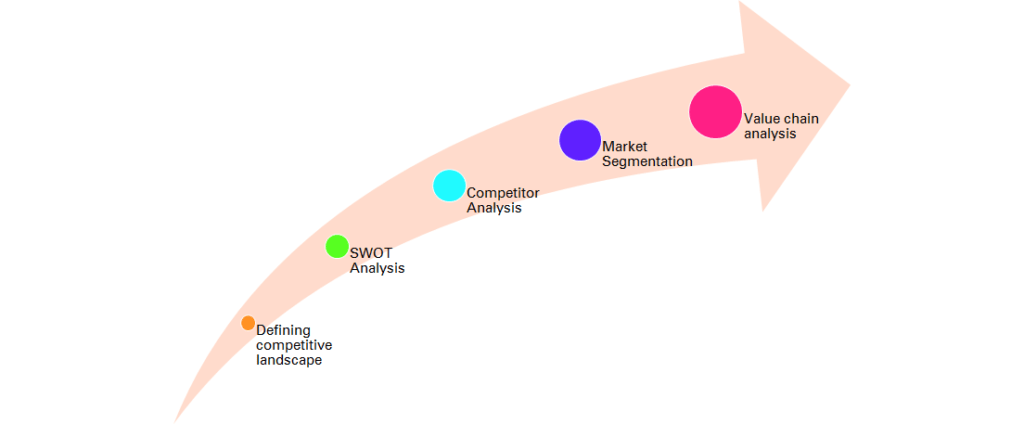In the fast-paced and competitive business environment, startups face numerous challenges in establishing their presence and gaining a competitive edge. Assessing the competitive landscape is a crucial step in strategic formulation, as it allows startups to identify market opportunities, understand competitors, and strategically position themselves for success. This blog post explores the technical aspects of assessing the competitive landscape, followed by analogies that illustrate key concepts, ultimately providing startups with valuable insights to navigate the complex world of strategic positioning.
Assessing the Competitive Landscape

Defining the Competitive Landscape
To effectively assess the competitive landscape, startups must first define the boundaries of their market and identify key competitors. This involves conducting thorough market research, analyzing industry trends, and mapping out the competitive landscape to gain a comprehensive understanding of the market dynamics.
SWOT Analysis
A SWOT (Strengths, Weaknesses, Opportunities, and Threats) analysis is a powerful tool for evaluating a startup’s internal capabilities and external environment. By identifying strengths and weaknesses, startups can capitalize on their unique advantages while addressing areas of improvement. Opportunities and threats analysis helps identify potential growth areas and anticipate challenges in the competitive landscape.
Competitor Analysis
Understanding competitors is essential for startups to differentiate themselves and identify areas of competitive advantage. Startups should analyze competitors’ products, pricing strategies, marketing approaches, target markets, and customer experiences to identify gaps and opportunities in the market. This analysis enables startups to position themselves strategically and offer unique value propositions.
Market Segmentation
Segmenting the market helps startups identify target customer groups and tailor their strategies accordingly. By dividing the market into distinct segments based on demographics, psychographics, or behavior, startups can better understand customer needs and preferences, enabling them to develop targeted marketing and product strategies.
Value Chain Analysis
Analyzing the value chain provides startups with insights into the activities and processes that create value in their industry. By examining each step of the value chain, startups can identify opportunities for cost optimization, operational efficiency, and value creation. This analysis helps startups understand their position in the value chain and identify areas where they can gain a competitive advantage.
Analogies: Bringing the Concepts to Life
The Chess Game Analogy
Imagine a game of chess, where startups represent individual players striving to outmaneuver their opponents and achieve victory. Each player studies their opponent’s moves, anticipates their strategies, and positions their pieces strategically to gain an advantage. Similarly, startups must assess the competitive landscape, analyze competitors’ moves, and strategically position themselves to capture market opportunities and gain a competitive edge.
The Sports Tournament Analogy
Think of a sports tournament where teams compete for the championship. Each team analyzes their opponents’ strengths and weaknesses, studies their playing styles, and adjusts their game plans accordingly. Similarly, startups need to assess the competitive landscape, understand competitors’ offerings, and position themselves in a way that highlights their unique strengths and offers a compelling value proposition to customers.
The Ecosystem Analogy
Visualize the natural ecosystem, where different species coexist and compete for resources. Each species has unique characteristics and strategies to survive and thrive in their environment. Similarly, startups operate in an ecosystem where they must identify their niche, differentiate themselves from competitors, and leverage their unique strengths to gain a competitive advantage and secure their place in the market.
Assessing the competitive landscape is a critical step for startups in strategic formulation. By understanding market dynamics, identifying competitors, and strategically positioning themselves, startups can gain a competitive advantage and thrive in a crowded marketplace. The technical insights provided in this blog post offer startups practical tools and frameworks to assess the competitive landscape effectively
One thought on “Assessing Competitive Landscape: Strategic Positioning and Competitive Advantage for Startups”